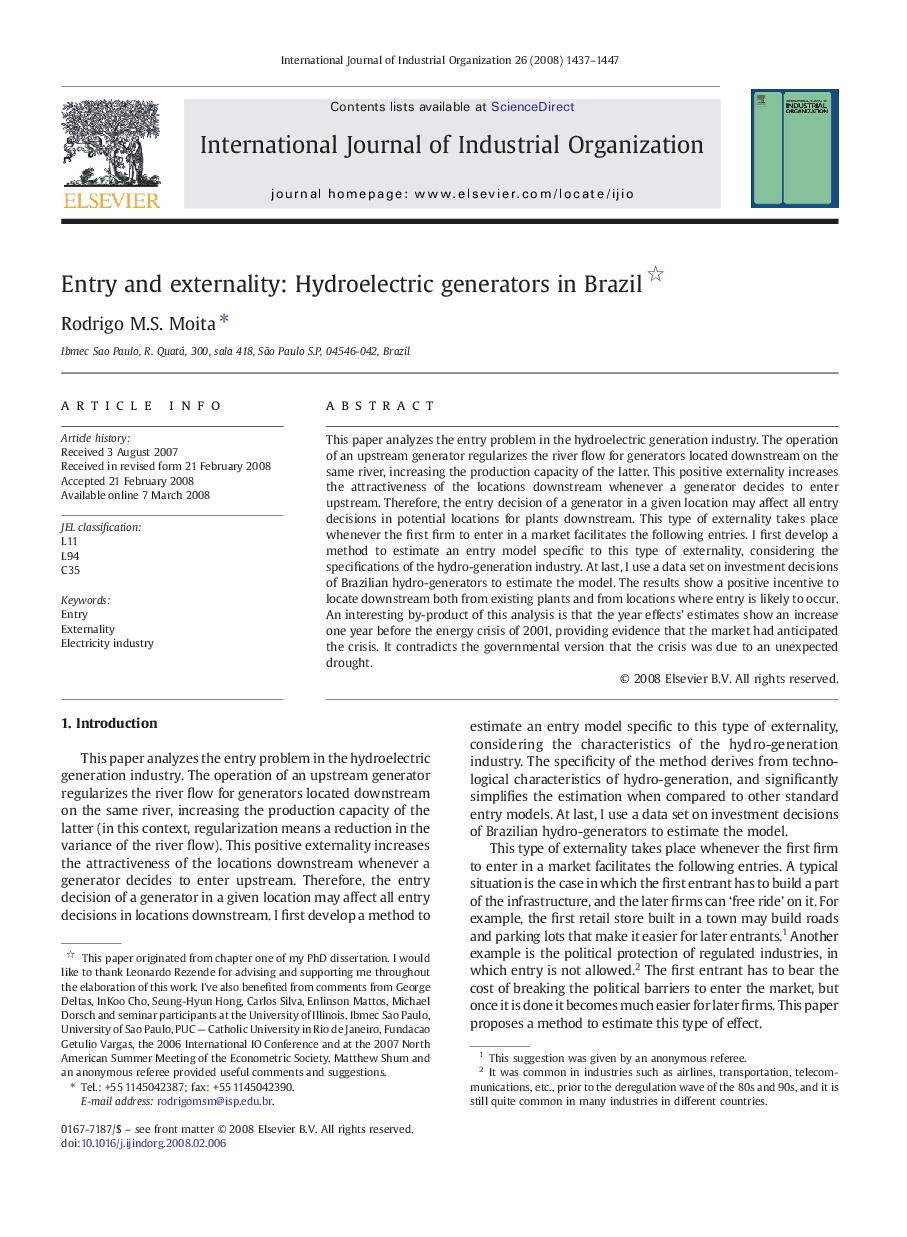| Article ID | Journal | Published Year | Pages | File Type |
|---|---|---|---|---|
| 5078401 | International Journal of Industrial Organization | 2008 | 11 Pages |
Abstract
This paper analyzes the entry problem in the hydroelectric generation industry. The operation of an upstream generator regularizes the river flow for generators located downstream on the same river, increasing the production capacity of the latter. This positive externality increases the attractiveness of the locations downstream whenever a generator decides to enter upstream. Therefore, the entry decision of a generator in a given location may affect all entry decisions in potential locations for plants downstream. This type of externality takes place whenever the first firm to enter in a market facilitates the following entries. I first develop a method to estimate an entry model specific to this type of externality, considering the specifications of the hydro-generation industry. At last, I use a data set on investment decisions of Brazilian hydro-generators to estimate the model. The results show a positive incentive to locate downstream both from existing plants and from locations where entry is likely to occur. An interesting by-product of this analysis is that the year effects' estimates show an increase one year before the energy crisis of 2001, providing evidence that the market had anticipated the crisis. It contradicts the governmental version that the crisis was due to an unexpected drought.
Related Topics
Social Sciences and Humanities
Economics, Econometrics and Finance
Economics and Econometrics
Authors
Rodrigo M.S. Moita,
